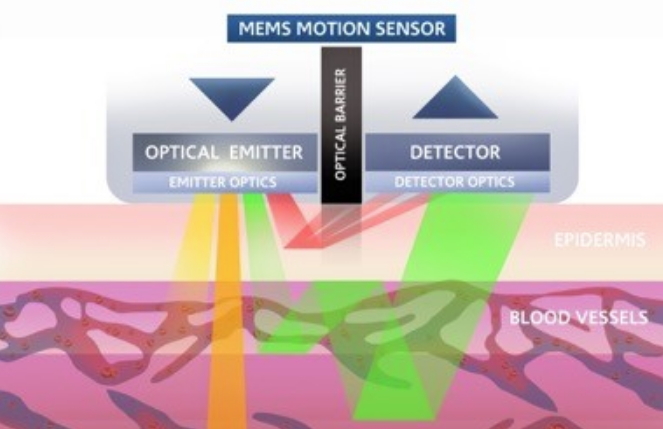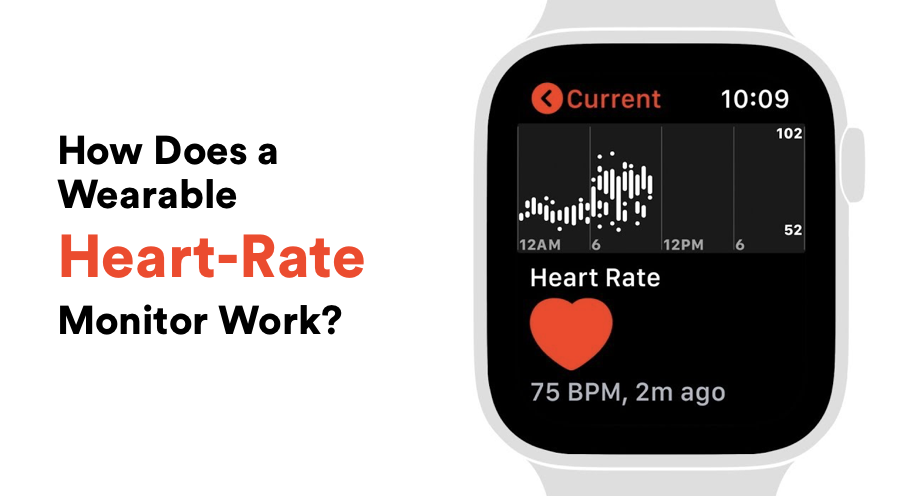These trackers come with a heart rate sensor that helps you in tracking your heart rate. Most of the tech giants and smartphone makers are offering wearables that are equipped with heart rate monitors. Besides, these fitness trackers enable users to keep a track on their day to day physical activities to stay healthy and fit. But, the only question that always had me puzzled about these wearable devices is how the heart rate monitor exactly works? And I know you also have asked many times the same question to yourself. Don’t worry; by the end of this article, you will be able to understand the complete functionality of a heart rate monitor in wearables.
What are the heart rate monitor sensors?
There are basically two types of technology that we currently use to measure the heart rate including Chest Straps and Optical sensors. Optical sensors are the one that is being used by all wearables to monitor your heart rate. Optical sensors use a scientific methodology named Photoplethysmography a.k.a PPG. Under this method, the sensors use the light for monitoring the pulse rate via blood flow. The sensors used the light to shine it under the human skin, and the light is scattered by the blood flow. Here, PPG supposed that the light entered into the human body will be scattered in a predictable manner depending upon the changing dynamics of the blood flow. The blood flow dynamics could be changed due to a change in pulse rate or change in blood volume.
In order to understand the core processing of the heart rate monitoring sensors, you need to go through the four technical components of it.
Following are the four technical components that a wearable heart rate sensors use to monitor the heart rate

Optical Emitter
– The first component of the sensor is the light or optical emitter that is responsible for sending the light into human skin. The emitter is consist of at least 2 LED’s that emits the light directly under the skin to get scattered by the blood flow. The emitter has to work over a different level of skin and tissue as the users of the wearable could have different skin tone, thickness, and morphology. To tackle this situation most of the wearable makers use the multiple light wavelengths with their wearables to deal with different skins.
Digital Signal Processor (DSP)
– Once the light emitted from the LED’s enters the body, it gets scattered by the blood flow of the users. The scattered light then collected by DSP to further translate it into the form of Zero and One’s. The collected data from the scattered light processed by the sensor to precisely monitor the user heart rate.
Accelerometer
– The other component used by the sensor is Accelerometer that monitors and measure the motion. The motion measurements are used with DPS signals into the motion tolerant PPG-algorithms for measuring the actual heart rate.
Algorithms
– This is the final component of the sensor that is responsible for calculating the heart rate and showing it to the users. Algorithms collect the signals from Accelerometer and DSP to process them into the motion tolerant heart rate. This component is also capable of measuring other biometrics such as calories burned, VO2, blood pressure, heart rate variability, R-R interval, and blood oxygen level.
As the heart rate monitors are mostly equipped with wearables devices, so the sensors sit on your wrist. However, the earbud heart rate sensors are also catching up with the trend in the industry. No matter on which part of the body the sensor sits the process will be the same to measure the heart rate.
You will find this article useful: what is the Technology Stack of Airbnb
What about the accuracy?

This topic has always been the favorite point of discussion among experts. The chest straps are considered more accurate compared to the wearables devices due to the position of the sensors. However, we will be discussing the accuracy of the monitors within the wearables as there is only a thin difference between the chest straps and wearables. Now, there are a plethora of fitness trackers and wearables in the market offering the heart sensors. From Apple Watch to Fitbit trackers you will find a variety of options in the market. The heart rate monitoring technology in the wearables is still improving; though it has become much more reliable than earlier models, it still has some distance to cover. But, if you go for trustworthy brands like Apple or industry leader Fitbit you don’t’ have to worry about the accuracy of the heart rate monitoring sensors.
Which one to choose?
As I have already mentioned, the Wearables market is getting bigger with time you have plenty of options depending upon your choice and budget. There are budget-friendly wearables offerings from companies like Xiaomi and Honour. You can buy Mi band 3 that comes with a heart rate monitor and performs well compared to other wearables under this price range. Besides, Fitbit offers a wide variety of fitness wearables having the best working heart rate monitors. If you have a more flexible budget than Apple Watches are the best alternative as they offer many other features along with the heart rate monitoring.
 December 14, 2018
December 14, 2018







